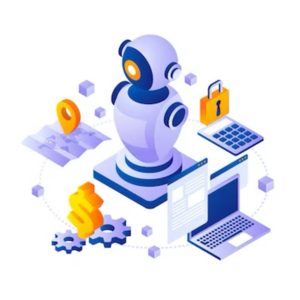
How Intelligent Automation is Transforming the Workplace
In today’s competitive business landscape, automation has become a popular buzzword for companies looking to streamline operations and reduce costs.
However, intelligent automation is taking it further by combining artificial intelligence, machine learning, and robotic process automation (RPA) to optimize processes and decision-making. This article will explore the basics of intelligent automation, its benefits, and what you need to know to stay ahead of the curve.
The Benefits of Intelligent Automation in the Workplace
- Improved Business Output
Intelligent automation offers a range of benefits that can help businesses improve productivity, efficiency, and profitability.
One of the most significant benefits is the ability to reduce errors and increase output.
By automating tedious and repetitive tasks, businesses can ensure that work is done accurately and consistently, minimizing the risk of errors and delays. This also frees employees to focus on higher-level tasks requiring creativity and critical thinking.
- Enhanced Decision-Making Processes
Another benefit of intelligent automation is the ability to improve decision-making.
By leveraging AI and machine learning algorithms, businesses can analyze large amounts of data and identify patterns and trends that would be difficult or impossible for humans to spot.
This can help businesses make more informed decisions and reduce the risk of errors or biases.
- Improved Efficiency
Intelligent automation can also help businesses reduce costs by optimizing processes and reducing waste.
By automating tasks that would otherwise require manual labor, businesses can reduce the need for human resources and save money on salaries and benefits.
Additionally, by reducing the risk of errors and improving decision-making, businesses can avoid costly mistakes and improve their bottom line.
How Intelligent Automation Works – Artificial Intelligence, Machine Learning, and Robotics
Intelligent automation comprises the following key technologies – artificial intelligence (AI), machine learning, and RPA.
Intelligent automation systems typically involve a combination of these technologies. For example, an intelligent automation system for processing invoices might use AI to analyze the content of the invoice, machine learning to improve accuracy over time, and RPA to enter data into an accounting system automatically.
Examples of Intelligent Automation in Various Industries
Intelligent automation is used in various industries, from manufacturing and logistics to healthcare and finance.
In manufacturing, for example, intelligent automation can optimize production processes, reduce waste, and improve quality control. Intelligent automation is used in logistics to optimize supply chain management and reduce the risk of errors and delays.
In healthcare, intelligent automation is used to improve patient care and reduce costs. For example, intelligent automation can analyze medical images and identify abnormalities that human radiologists might miss.
Intelligent automation could improve fraud detection, reduce processing times, and improve decision-making in finance.
Best Practices for Successful Intelligent Automation Adoption
To ensure the successful adoption of intelligent automation, businesses should follow several best practices.
First, start small and focus on quick wins. This will help you build momentum and demonstrate the value of intelligent automation to stakeholders across your organization.
Next, prioritize data security and privacy by implementing best practices for data management and compliance.
This will help you avoid costly mistakes and ensure your organization’s intelligent automation systems are secure and compliant with relevant regulations.
Future Trends and Predictions for Intelligent Automation
As intelligent automation continues to evolve, several trends and predictions are worth watching.
One trend is the rise of “hyper-automation,” which involves the integration of multiple automation technologies, including AI, machine learning, and robotics, to create a more cohesive and efficient automation ecosystem.
Another is the increasing use of intelligent automation in customer service and support. Intelligent automation can analyze customer data, identify trends and patterns, and provide personalized recommendations and support.
Finally, we can expect to see continued adoption of intelligent automation in healthcare and the development of new applications and use cases for intelligent automation in other industries.
Conclusion – The Importance of Staying Ahead of the Curve in the Age of Intelligent Automation
As intelligent automation continues evolving, businesses must stay ahead of the curve and remain informed about new trends and developments. By doing so, businesses can ensure that they are prepared to leverage the full potential of intelligent automation and stay ahead of the competition.
About SALIX
For over 20 years, SALIX Data has provided more than 2,500 customers with ways to streamline their business through technology and outsourcing solutions.
SALIX’s Intelligent Automation expertise allows organizations to automate repetitive, mundane tasks with intelligent software that simulates human behavior, enabling business users to devote more time to serving customers or other higher-value work.
Talk to us today to learn how we can help you maximize your Intelligent Automation investment by letting SALIX enable your best people to do what they are best at more often.







